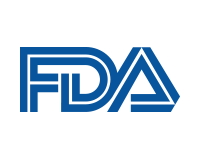U.S. Department of Health and Human Services
Date of this Version
2018
Document Type
Article
Citation
Journal of Attention Disorders 2018, Vol. 22(2) 182–190
sagepub.com/journalsPermissions.nav hDttOpsI://1d0o.i.1o1rg7/71/01.1018770/15048710574679187861985815 journals.sagepub.com/home/jad
Abstract
Objective: To estimate the prevalence of adult ADHD diagnosis and treatment in U.S. Medicaid beneficiaries. Method: Using outpatient, inpatient, and pharmacy billing records for patients eligible for Medicaid fee-for-service benefits within 29 states from 1999 to 2010, we estimated the annual prevalence of ADHD diagnosis and treatment. Results: The prevalence of ADHD diagnosis increased from 2.20 per 1,000 patients in 1999 to 10.57 in 2010. Likewise, prevalence of ADHD treatment increased from 1.95 per 1,000 patients in 1999 to 13.16 in 2010. Between 40% and 65%, patients had ADHD drug prescription fills 6 months after ADHD diagnosis, whereas 45% to 55% of the beneficiaries with an ADHD drug prescription fill had ADHD diagnoses within 6 months before the prescription. Conclusion: In publicly insured adults, the prevalence of ADHD diagnosis and treatment increased dramatically over the years. Approximately half of the diagnosed patients are not treated, whereas half of the treated adults are not diagnosed. (J. of Att. Dis. 2018; 22(2) 182-190)
Included in
Dietetics and Clinical Nutrition Commons, Health and Medical Administration Commons, Health Services Administration Commons, Pharmaceutical Preparations Commons, Pharmacy Administration, Policy and Regulation Commons


Comments
U.S. government works are not subject to copyright.